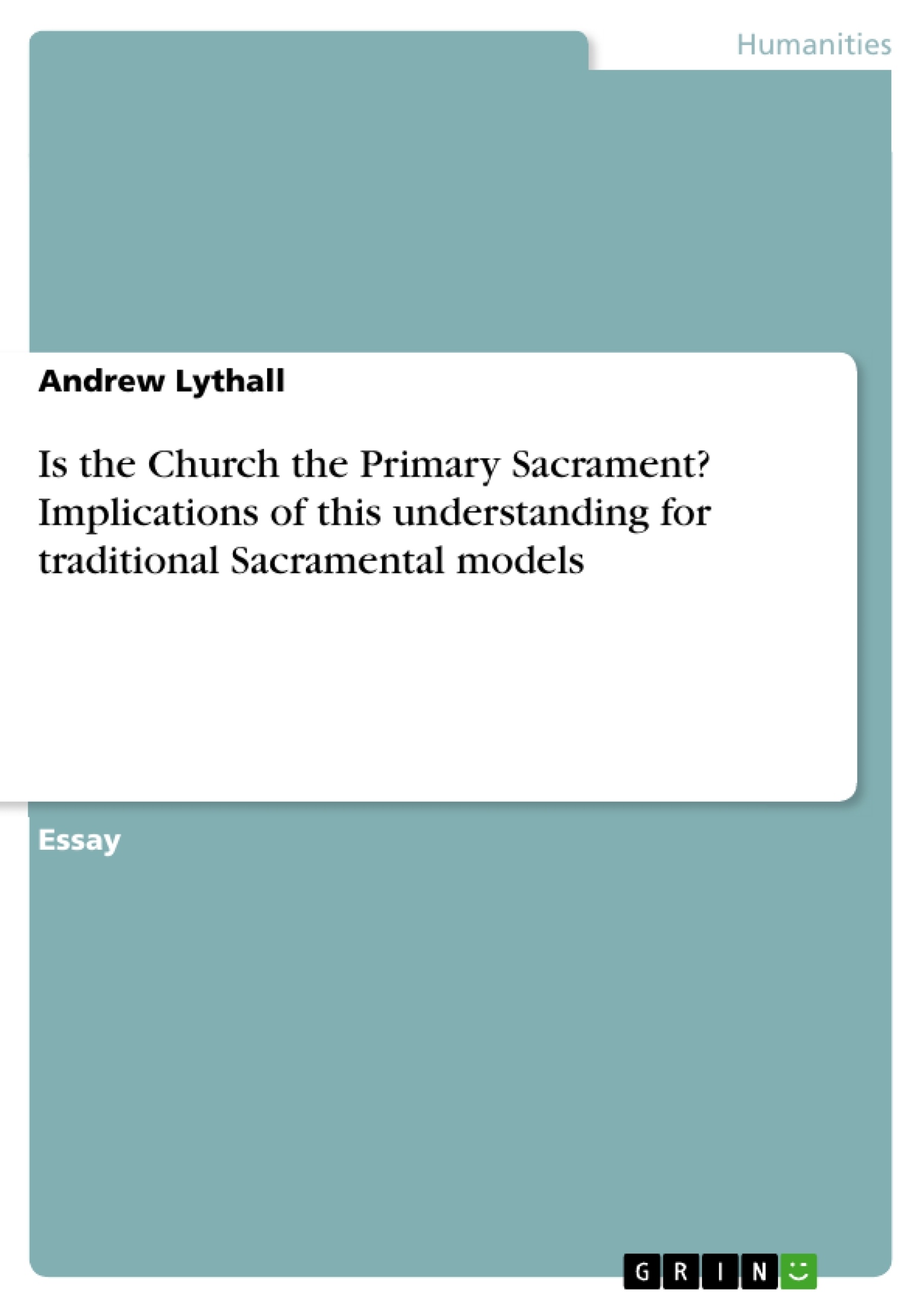At its dawn, the twentieth century was hailed as the century of the Church. As a result, in recent years, there has been a renewed interest in the Church, both in terms of its role and functions, but also in terms of its nature and ontological sacramentality. Of particular interest is the emerging concept that the Church may be the primary or primordial sacrament.
This understanding, if correct, has considerable implications for traditional models of sacramentality, both in the seven-sacrament tradition within the Roman Catholic Church, and also the understanding of sacramentality represented by Reformed and Protestant models. This essay analyses the theological understanding of the church as a sacramental agent, and explores alternative forms of sacramantality.
Inhaltsverzeichnis (Table of Contents)
- Is the Church the Primary Sacrament? What implications does this understanding have for traditional Sacramental models?
- The Church as a Primary Sacrament
- The Church's Sacramental Nature
- The Church's Sacramental Function
- The Church as a Sacrament: Traditional Models
- Implications for Traditional Sacramental Models
- The Church as Primary Sacrament: An Alternative View
Zielsetzung und Themenschwerpunkte (Objectives and Key Themes)
This paper explores the contemporary concept of the Church as the primary or primordial sacrament. It investigates the historical development of this idea, analyzes its implications for traditional models of sacramentality, and examines its potential impact on the Church's approach to missiology, inclusivity, and ecumenicalism.
- The historical development of the concept of the Church as a primary sacrament.
- The implications of this understanding for traditional sacramental models, particularly the seven-sacrament tradition within the Roman Catholic Church and the Reformed and Protestant models.
- The potential impact of this concept on the Church's approach to missiology, inclusivity, and ecumenicalism.
- The relationship between the Church and other sacraments, particularly the Eucharist.
- The sacramental nature of the Church's institutional structures, such as ministry and the concepts of ecclesial time and space.
Zusammenfassung der Kapitel (Chapter Summaries)
- Is the Church the Primary Sacrament? What implications does this understanding have for traditional Sacramental models? This chapter examines the historical development of the concept of the Church as the primary sacrament, tracing its roots back to the early Church Fathers and exploring its evolution in the context of the Second Vatican Council. It also discusses the different ways in which the Church can be considered a sacrament, including its generative nature, its functional role, and its conformity to traditional definitions of sacramentality.
- The Church as a Primary Sacrament This chapter delves into the arguments for the Church being the primary or primordial sacrament. It explores the Church's potential to generate all other sacramental life, its unifying role in the continuation of sacramental action, and its embodiment of the sacramental Christ. The chapter also discusses the ways in which the Church serves as a basis for other sacramental ministry and its dependence on the Church's faith.
- Implications for Traditional Sacramental Models This chapter discusses the significant implications that the concept of the Church as a primary sacrament has for traditional sacramental models. It explores the challenges it poses to the notion of a fixed number of sacraments, the implications for the Church's institutional structures, and the potential for a hierarchical order within the sacraments. The chapter also examines the liturgical implications of this understanding, including the need to focus liturgical activity on the expression and edification of the Church.
- The Church as Primary Sacrament: An Alternative View This chapter presents a counterargument to the idea that the Church is the primary sacrament. It examines the historical and theological significance of the Eucharist, arguing that it may be considered the primary sacrament, with the Church being dependent upon it for its fulfillment. The chapter also discusses the Eucharist's embodiment of the physical presence of Christ in a way that the Church does not, and its role in publically declaring the Church's identity.
Schlüsselwörter (Keywords)
The primary keywords and focus topics of this text include Church as a sacrament, sacramental models, traditional sacraments, Eucharist, missiology, inclusivity, ecumenicalism, liturgical implications, and ecclesial structures.
- Quote paper
- Andrew Lythall (Author), 2010, Is the Church the Primary Sacrament? Implications of this understanding for traditional Sacramental models, Munich, GRIN Verlag, https://www.grin.com/document/319475



